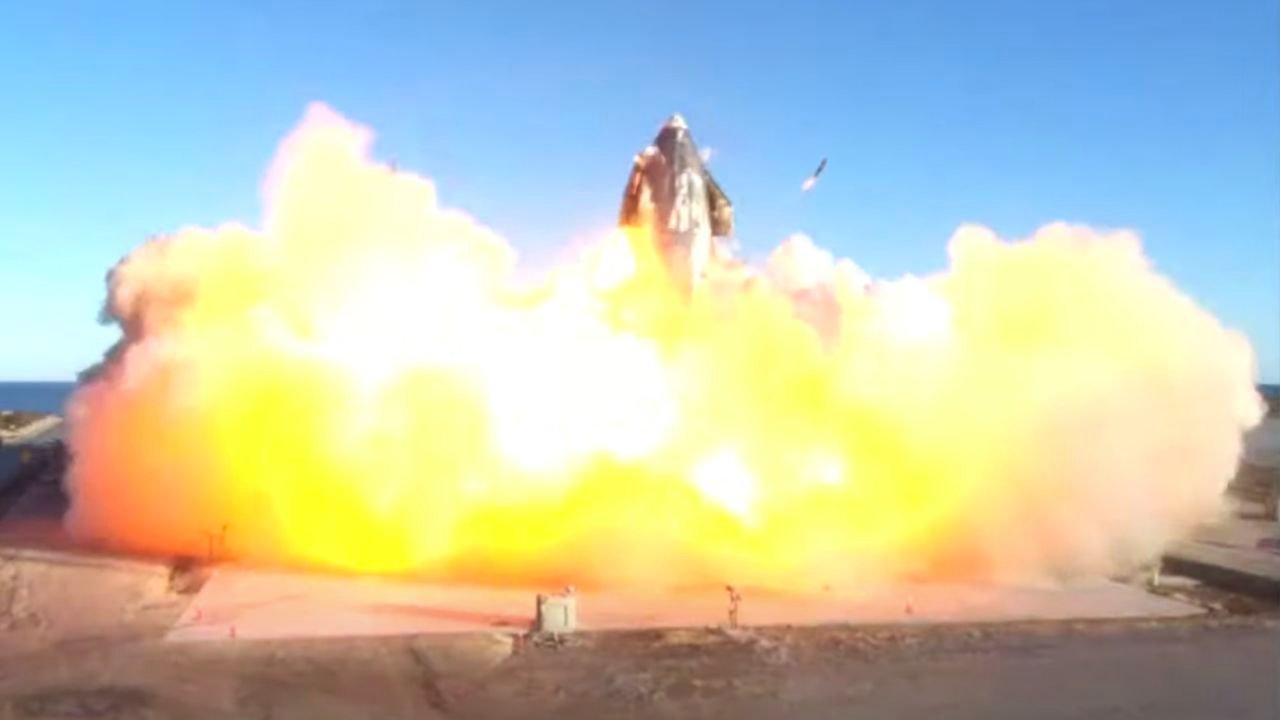In a dramatic turn of events, SpaceX’s highly anticipated Starship rocket experienced a catastrophic failure during its recent test flight. The massive rocket, hailed as the world’s most powerful spacecraft, exploded shortly after launch, marking a setback for Elon Musk’s ambitious plans to revolutionize space travel.
The test flight, conducted from SpaceX’s Starbase facility in Boca Chica, Texas, was part of a broader effort to validate Starship’s design and capabilities. The rocket lifted off successfully, reaching an altitude of several kilometers before encountering issues that led to its destruction.
What Happened?
According to initial reports, the Starship’s engines appeared to function normally during the early stages of the flight. However, as the rocket attempted to execute a critical maneuver during ascent, it lost control. Moments later, the vehicle exploded in mid-air, scattering debris over the Gulf of Mexico.
SpaceX engineers are now analyzing data from the flight to determine the exact cause of the failure. In a statement, SpaceX acknowledged the incident, emphasizing that the test provided valuable insights for future missions.
Elon Musk’s Vision for Starship
The Starship rocket is a centerpiece of Elon Musk’s vision to make space travel more accessible and sustainable. Designed to be fully reusable, the spacecraft is intended to carry humans and cargo to the Moon, Mars, and beyond. At 120 meters tall, Starship is the largest and most powerful rocket ever built, capable of lifting over 100 metric tons into orbit.
Despite the setback, Musk remains optimistic. “We’ll learn from this and come back stronger,” he tweeted shortly after the explosion. He has frequently described Starship’s development process as one of trial and error, with each test contributing to the ultimate goal of creating a reliable interplanetary transport system.
The Road Ahead
While the explosion is undoubtedly a disappointment, it is not entirely unexpected. SpaceX has a history of embracing failures as part of its development strategy. Previous iterations of the Starship prototype also faced challenges, including hard landings and engine malfunctions. However, these setbacks have consistently led to improvements in subsequent designs.
Industry experts believe that this approach, while risky, has allowed SpaceX to push the boundaries of aerospace engineering. “Every test provides invaluable data,” said Dr. Maria Sanchez, a space technology analyst. “Failures like this are a stepping stone toward achieving greater milestones.”
Public and Industry Reactions
The explosion has drawn mixed reactions from the public and industry observers. While some critics question the safety and feasibility of the Starship program, many supporters praise SpaceX’s commitment to innovation. Enthusiasts gathered near the launch site to witness the flight expressed disappointment but remained hopeful about the program’s future.
NASA, which has partnered with SpaceX for its Artemis program aimed at returning humans to the Moon, reiterated its confidence in the company. In a statement, NASA Administrator Bill Nelson said, “Setbacks are part of any groundbreaking endeavor. We look forward to SpaceX’s next steps.”
Looking Forward
SpaceX plans to continue testing Starship in the coming months, with the goal of achieving a fully successful orbital flight in 2025. Engineers are already working on modifications to address the issues encountered during this latest test.
Despite the explosion, the Starship program remains a beacon of hope for the future of space exploration. With its potential to drastically reduce the cost of space travel and enable humanity’s expansion into the cosmos, Starship is more than just a rocket—it’s a symbol of ambition and resilience.
As SpaceX regroups and presses forward, one thing is certain: the journey to the stars is rarely smooth, but the destination is worth the effort.






